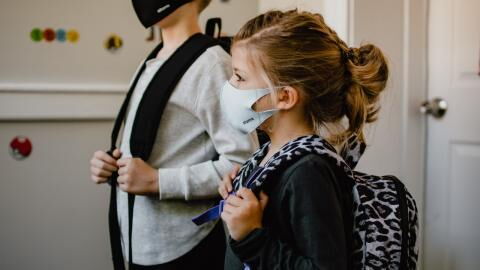Daily COVID cases have been piling up in the UK and in the past week alone, 38,000 new infections were reported—a 59% increase from the week before. This time around, schools and colleges have been one of the hardest hit by the third wave and more specifically by the Delta variant.
Discover our latest podcast
Delta variant in schools
Recent surveillance data from Public Health England (PHE) has uncovered that up until June 20, there have been 148 outbreaks in educational institutions. There has been a 56% rise in cases among children between the ages of 10 and 24 and a majority of pupils have been infected with the Delta variant.
Data from the Office of National Statistics (ONS) have found that in the third week of June, more than 16,000 students were absent from school because of suspected cases. Additionally, over 200,000 children have been forced to self-isolate because of potential contact with an infected person. They also found that 0.1% of all pupils were absent because their school had been shut down due to COVID.
Vaccination for children
With the continuous rise of cases, experts are predicting that more and more students will have to self-isolate in the coming weeks. Furthermore, some believe that the spread of the variant within the schools have had an impact on the overall transmission rate in the country. Professor Russell Viner, government adviser on the Scientific Advisory Group for Emergencies (SAGE) told BBC Radio 4 Today:
There's no doubt schools play a role in transmission, but it's not the driver of this pandemic infections tend to flood into schools from the community, but community schools play a role.
The government has been heavily debating whether or not to vaccinate all children over the age of 12 to curb the spread of the virus within educational settings and in greater society. Professor Aris Katzourakis, evolutionary virologist at Oxford University said:
With the UK now in the grip of a wave induced by the circulation of the more transmissible Delta variant, any delay now is likely to have significant public health consequences.
As these vaccines are shown to be safe for 12- to 18-year-olds and have clear direct and indirect benefits, it makes sense to open this up to younger age groups as soon as possible.”















